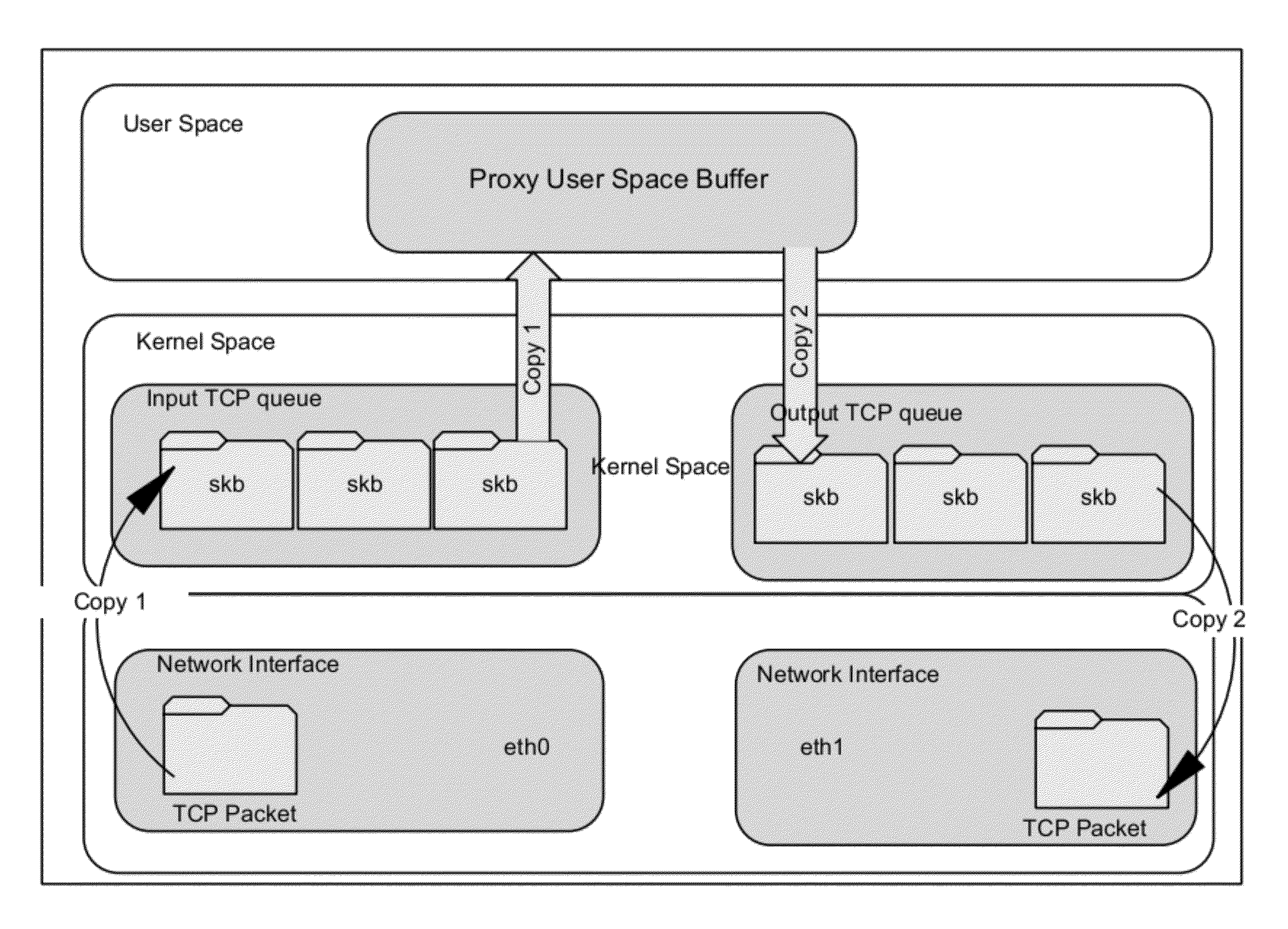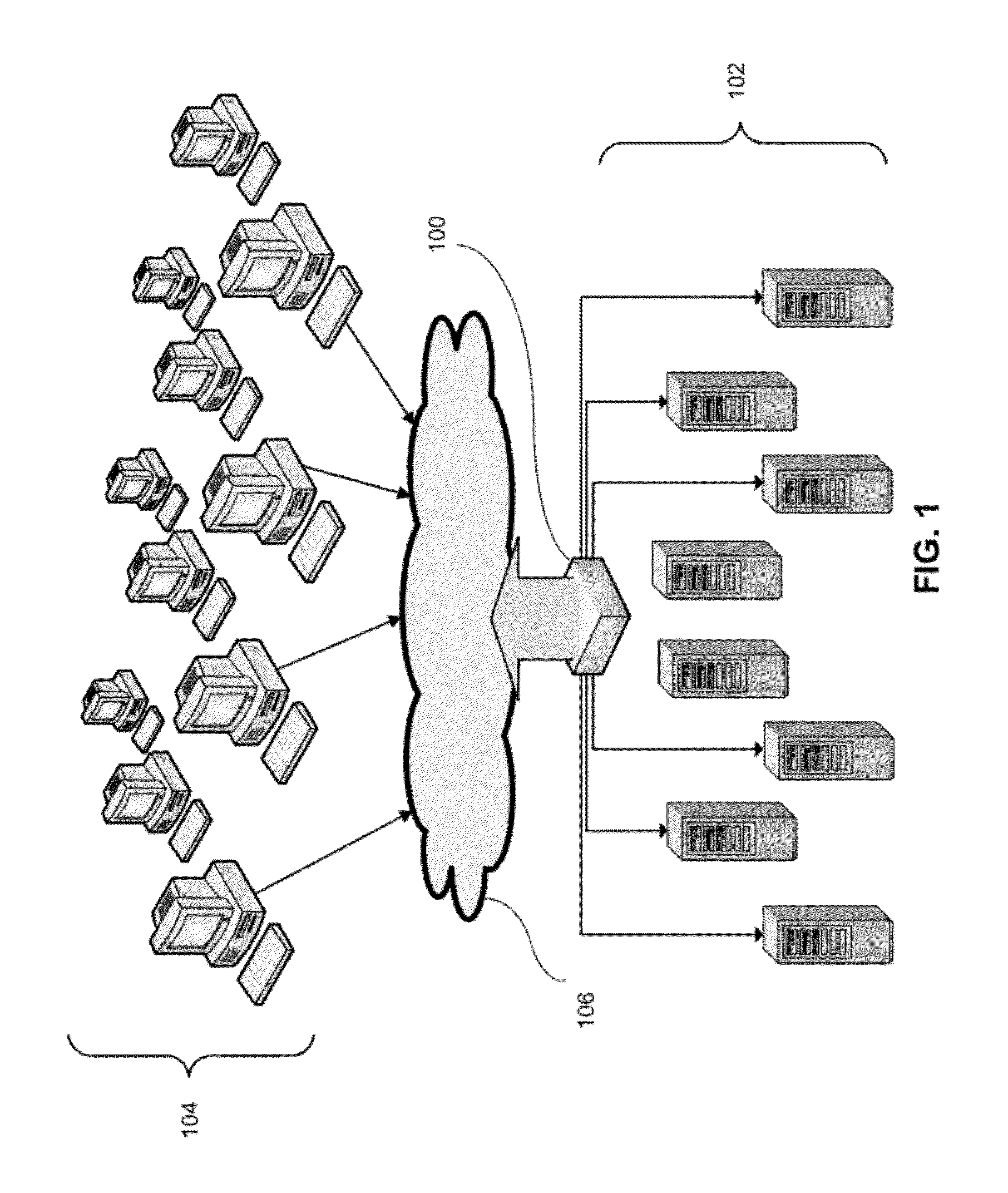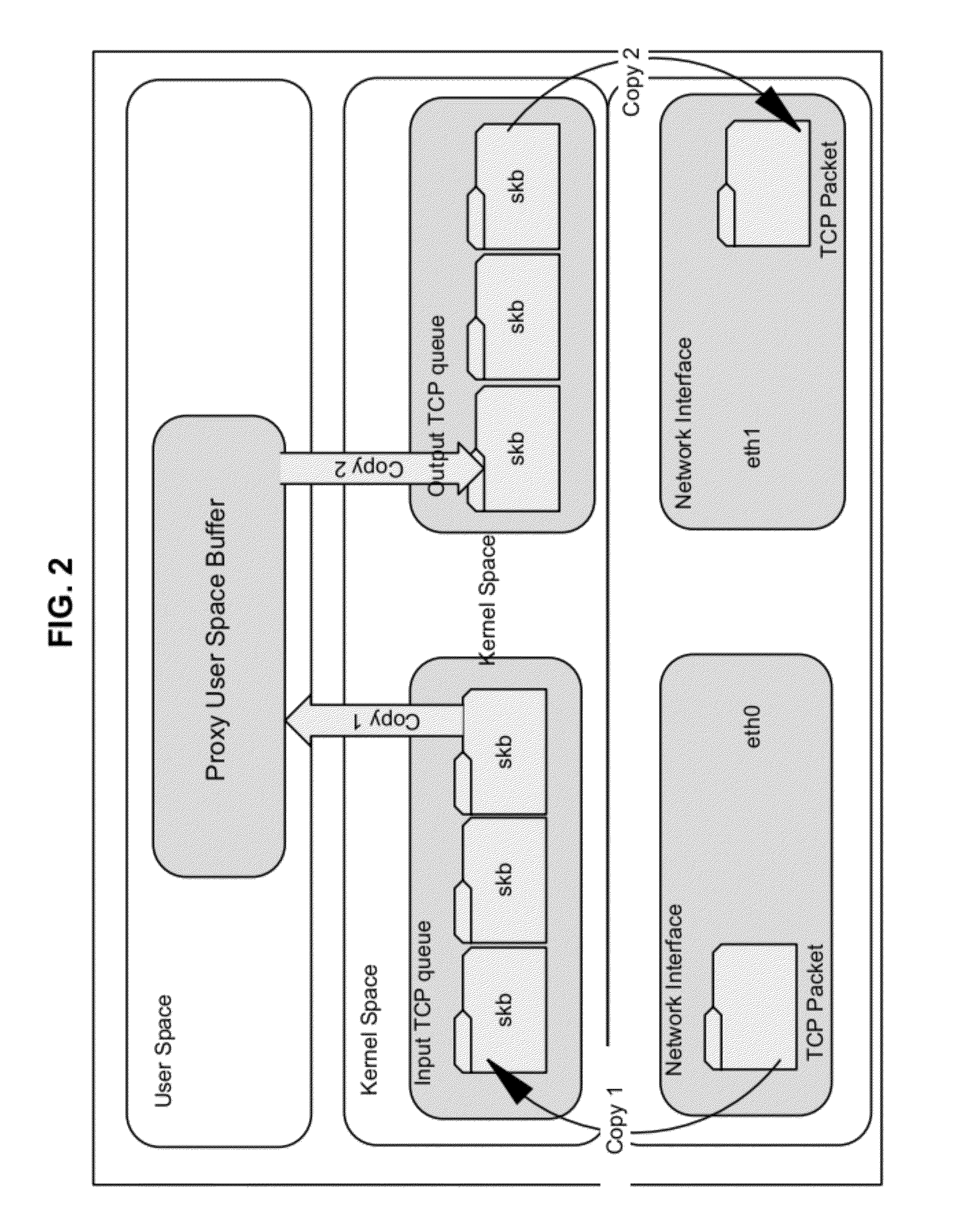Load balancing service for servers of a web farm
a load balancing and server technology, applied in the direction of static storage, transmission, instruments, etc., can solve the problems of limited computing power of web servers, inability of web servers to carry out a limited number of operations, and inability to meet client service requests, so as to save the use of computer resources
- Summary
- Abstract
- Description
- Claims
- Application Information
AI Technical Summary
Benefits of technology
Problems solved by technology
Method used
Image
Examples
Embodiment Construction
[0045]Web sites continually endeavor to provide scalable capacity for servicing client requests. Most large installations utilize some type of load balancing to achieve CPU capacity scaling. Load balancing can be done in several ways. One of the most commonly used methods is to use a server load balancing hardware device 100 as shown in FIG. 1. The server load balancing hardware device 100 is often a Layer 4 network switch. A layer 4 network switch acts as a front end for a web farm 102, which maximizes server resources by providing enhanced delivery of content between the web farm 102 and clients 104 connected to the web farm 102 through the Internet 106. Client requests are directed to the optimal web server in the web farm 102, based on web server loading, content distribution, and network conditions.
[0046]The present invention represents a system for load balancing of real servers in an asymmetric web farm. The disclosed server load balancing system may be used with high perform...
PUM
 Login to View More
Login to View More Abstract
Description
Claims
Application Information
 Login to View More
Login to View More - R&D
- Intellectual Property
- Life Sciences
- Materials
- Tech Scout
- Unparalleled Data Quality
- Higher Quality Content
- 60% Fewer Hallucinations
Browse by: Latest US Patents, China's latest patents, Technical Efficacy Thesaurus, Application Domain, Technology Topic, Popular Technical Reports.
© 2025 PatSnap. All rights reserved.Legal|Privacy policy|Modern Slavery Act Transparency Statement|Sitemap|About US| Contact US: help@patsnap.com



